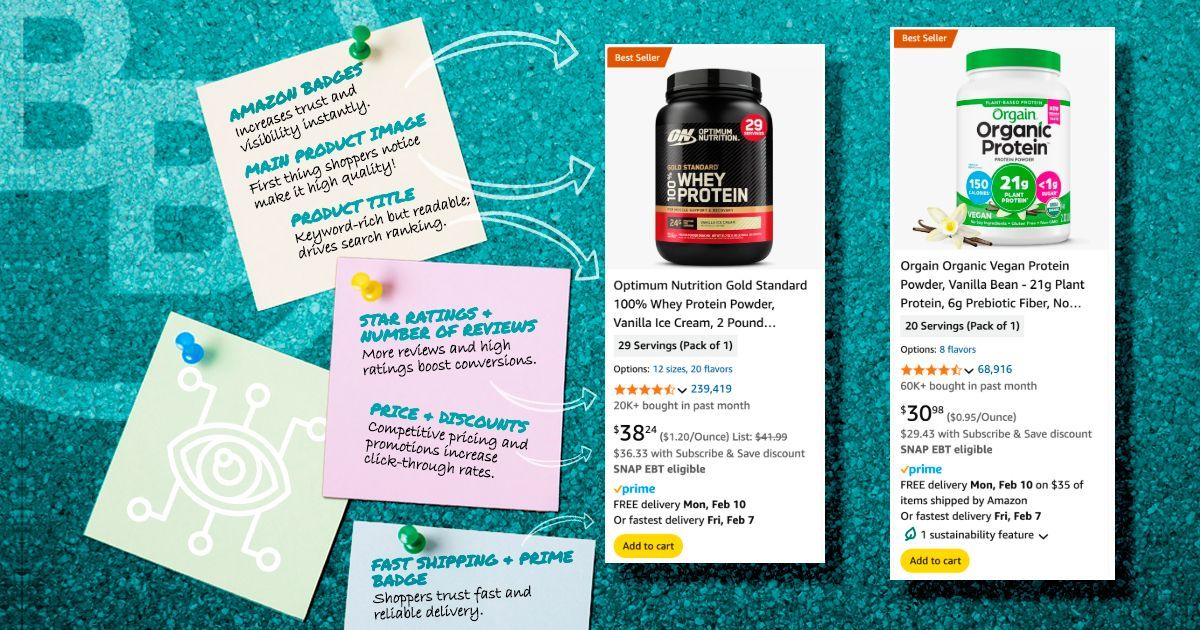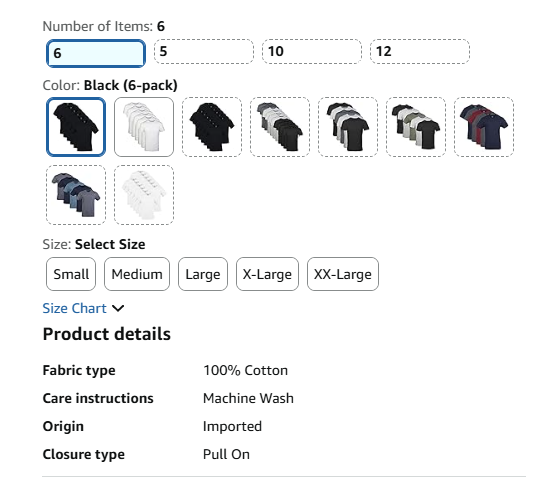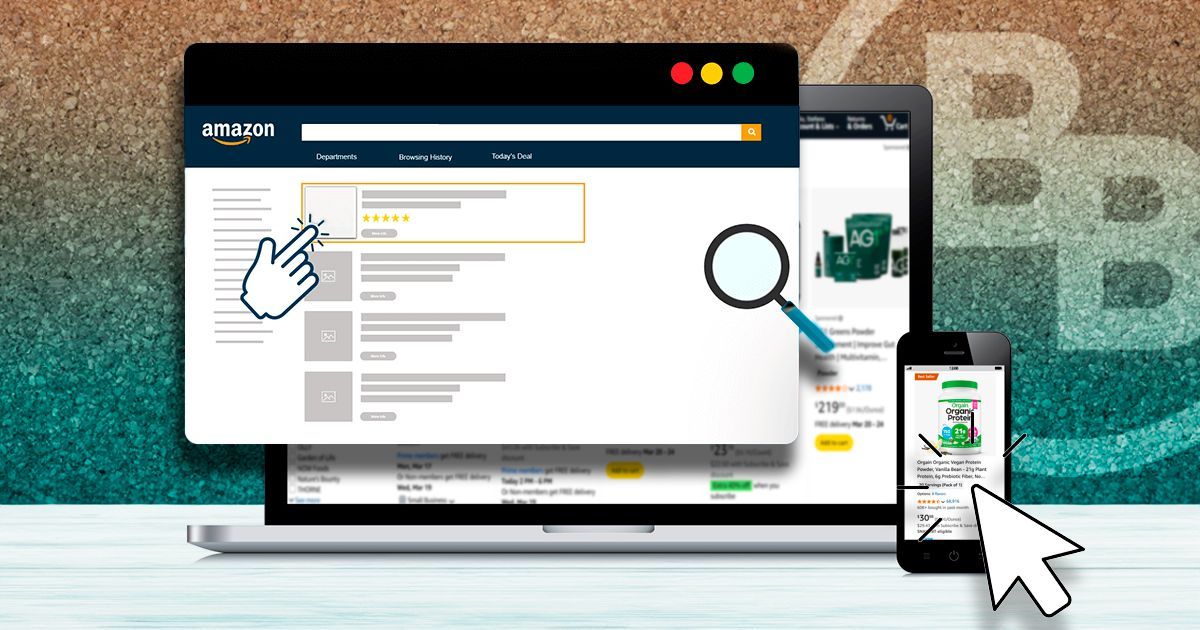By: Anthony Steele
Date Published: March 21, 2025
Read Time: 5 minutes

By: Anthony Steele
Date Published: March 21, 2025
Read Time: 5 minutes
In today’s fiercely competitive Amazon marketplace, standing out can be the difference between gaining clicks or being buried under countless other products. Understanding how to optimize your listings is key to attracting attention and boosting sales. This blog series will provide a comprehensive guide to transforming your Amazon listings, from understanding the anatomy of Amazon’s organic search results page, to mastering product listing optimization techniques, and finally, uncovering strategies to increase clicks and stop the scroll. Whether you're a seasoned seller or just getting started, these actionable strategies will guide you toward achieving higher visibility and success on Amazon.
Unlock the secrets to dominating Amazon's search results! The key to growing sales lies in understanding how Amazon displays your product on its Search Engine Results Page (SERP). Miss this, and you risk being lost in the crowd.
Before we jump in, let's review the main components of Amazon SERP and the critical elements that influence customer decisions, ensuring your product stands out from the competition and captures those vital clicks.

1. Product Badges
Amazon uses various badges to highlight products that meet certain criteria:
These badges serve to quickly draw attention to products that Amazon deems noteworthy, potentially increasing click-through rates and sales.
2. Main Product Image

3. Product Title
The product title is truncated on the SERP:
Learn More: Amazon’s New Product Title Requirements for 2025
4. Attribute Tags
These tags provide quick information about product features, such as:
Attribute tags help customers quickly filter products based on their specific needs.
5. Variations / Options
For products with multiple options, the SERP displays clickable links for different:
This feature allows customers to easily explore product variations without leaving the search results page.

6. Review Count & Star Rating
The SERP displays:
Customers can hover over the rating to see a breakdown of review percentages. This information is crucial for building trust and influencing purchase decisions.
7. Sales Velocity
For some products, Amazon displays sales data for the past 30 days. This can create a sense of urgency and social proof for popular items.
8. Pricing & Discounts
The SERP showcases various pricing elements:
These elements help customers quickly assess the value proposition and any available savings.
9. Shipping & Delivery Information
This section includes:
Fast, free shipping is a key factor in many purchase decisions on Amazon.
10. Additional Badges
Some listings may display additional badges, such as:
These badges help environmentally conscious consumers make informed choices.

11. Stock Information
12. Add to Cart Button
13. Brand Health Concerns
In some cases, the SERP may show:
These indicators may suggest issues with the brand's account health or competition for the Buy Box.
Now that we covered the DNA of Amazon’s SERP page let's jump into the importance and purpose of what Amazon has revolutionized.
The Amazon SERP is designed to:
1. Facilitate quick decision-making: By presenting key information at a glance, customers can make informed choices without clicking through to product detail pages.
2. Improve user experience: The layout and information hierarchy are optimized for easy scanning and comparison.
3. Drive conversions: Prominent pricing, discounts, and "Add to Cart" buttons encourage immediate action.
4. Reward-optimized listings: Products with well-crafted titles, high-quality images, and positive reviews tend to perform better in search results. These elements contribute significantly to improved search result performance, as highlighted by the Amazon Listing Quality Dashboard. The dashboard emphasizes the importance of complete and accurate product information, ensuring customers can easily find and evaluate your products.
5. Support Amazon's business model: The SERP design encourages purchases and supports Amazon's customer-centric approach.
For sellers, understanding and optimizing for Amazon's SERP is crucial for visibility and sales success. This involves keyword optimization, high-quality imagery, competitive pricing, and maintaining positive customer feedback.
A strong CTR indicates that your product listings are resonating with potential customers, which can lead to increased sales and better organic rankings. This study breaks down the primary factors influencing CTR on Amazon's Search Engine Results Page (SERP) and offers actionable strategies to improve your listings' performance.
When customers search for a product on Amazon, they encounter a SERP that includes both organic and paid placements.
Organic SERP Placements: These are unpaid listings that Amazon ranks based on its A10 algorithm, considering factors like SEO, conversion rates, and sales velocity.
Paid SERP Placements: These are sponsored ads that appear in various formats, such as Sponsored Product Ads (SPA), Sponsored Brand Ads (SBA), and Sponsored Display Ads (SD).
When optimizing for click-through rates (CTR), it's essential to consider both mobile and desktop search engine results page (SERP) experiences. Mobile devices have become a significant channel for online shopping. For instance, during the 2024 Thanksgiving period, mobile devices accounted for 59.5% of all online spending. Additionally, in 2023, over 53% of Amazon's website traffic originated from mobile devices.
This trend highlights the growing importance of mobile optimization to enhance user engagement and drive conversions.
Several elements influence whether a shopper clicks on your listing:
Here are actionable strategies to optimize your product listings and increase CTR:

Conclusion
Understanding and optimizing the primary factors that affect click-through rates on Amazon is essential for increasing product visibility, driving sales, and achieving long-term success. By focusing on relevancy, image and title optimization, competitive pricing, and customer reviews, sellers can significantly improve their CTR and overall performance on the Amazon platform. Regular monitoring, A/B testing, and adjustments based on performance data are key to maintaining a high CTR and staying ahead of the competition.
Key points about BSR:
Amazon's A9 and A10 algorithms determine how products rank in search results. These algorithms consider various factors to match products with customer searches. The A10 algorithm is an improvement over A9, providing more accurate search results.
Factors influencing keyword ranking:
Optimizing product listings is essential for attracting both the algorithm and potential buyers. High-quality listings with clear, appealing, and informative details perform best.
Key elements of listing optimization:
To succeed on Amazon, brands must focus on several key areas to improve their rankings and visibility.
By focusing on these key areas, brands can improve their Amazon rankings, increase visibility, and drive sales. Understanding the intricacies of Amazon's algorithms and optimizing product listings accordingly is essential for success in the competitive Amazon marketplace.
Stay tuned as we dive deeper into the critical elements influencing your Amazon sales performance.
In Part 01, we’ve broken down the anatomy of Amazon's Organic Search Results Page, revealing how every element on the page—from badges to stock availability—impacts your listing's success. In Part 02, we’ll explore best practices for optimizing your product listings, focusing on main images, titles, and reviews. Keep reading to ensure your Amazon listings are not just visible but dominant in the marketplace.
(754) 273-7016 | 1680 Michigan Ave Suite 700 #215 Miami Beach, FL 33139